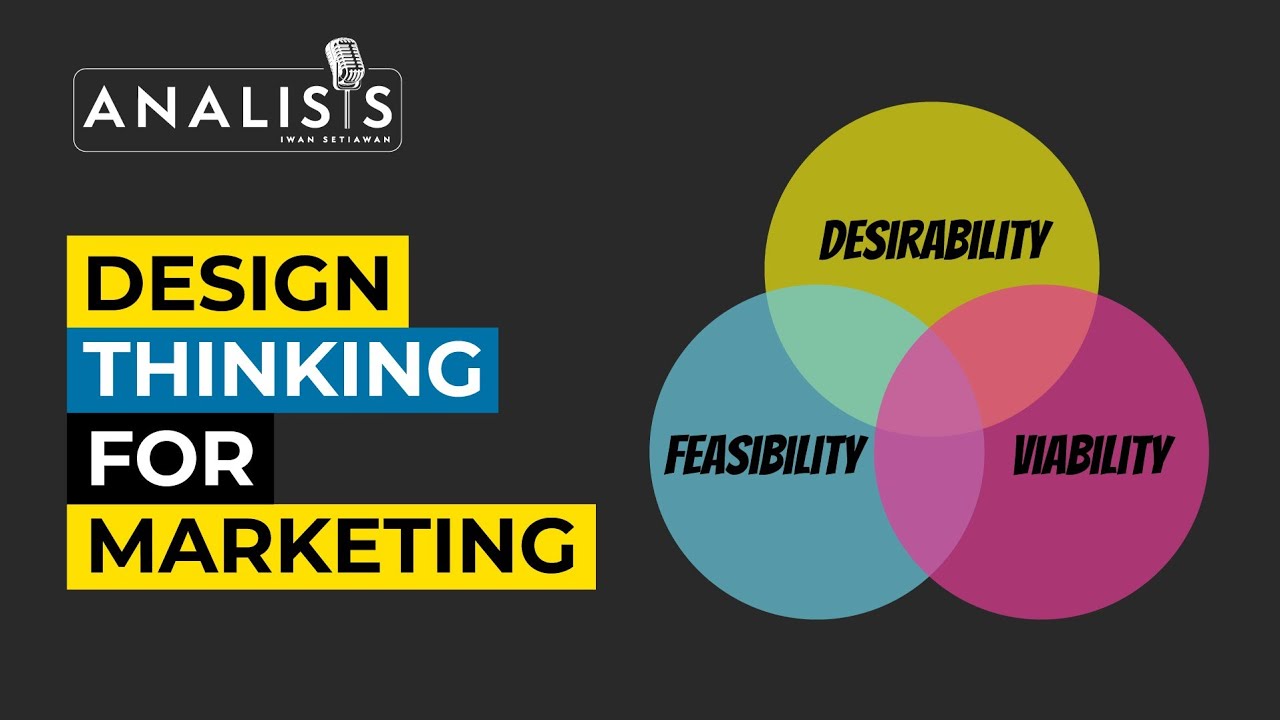What Is Design Thinking?
Summary
TLDRDesign thinking is a human-centric approach that leverages a designer's toolkit to generate innovative ideas and solve problems effectively. By adopting a designer's perspective, it encourages practitioners to empathize with customers, enabling them to observe challenges from the inside out. This method not only helps answer existing questions but also aids in identifying the right questions to ask, fostering deeper insights and creative solutions.
Takeaways
- 🛠️ Design thinking is a method for generating new ideas and solving problems.
- 👥 It emphasizes a human-centric approach, focusing on the needs and experiences of users.
- 👀 Designers observe problems from the inside out, gaining deeper insights.
- ❓ The process helps in not only answering questions but also in identifying the right questions to ask.
- 💡 It utilizes a designer's toolkit to explore innovative solutions.
- 🌍 Understanding the user's perspective is crucial in the design thinking process.
- 🔄 Design thinking encourages iteration and flexibility in problem-solving.
- 🤝 Collaboration is key, as it often involves teamwork across various disciplines.
- 📊 It fosters a culture of experimentation and learning from failures.
- 🎶 The process is often accompanied by creative thinking and inspiration.
Q & A
What is design thinking?
-Design thinking is a method that utilizes a designer's toolkit to generate new ideas and discover innovative solutions to problems.
What does it mean for design thinking to be human-centric?
-Being human-centric means that design thinking emphasizes understanding and addressing the needs and perspectives of users or customers.
How does design thinking change the way problems are observed?
-Design thinking encourages observing problems from the inside out, allowing for a deeper understanding of user experiences rather than just looking at external factors.
Why is it important to find the right questions to answer in design thinking?
-Finding the right questions is crucial because it leads to more relevant and effective solutions, ensuring that the outcomes truly meet user needs.
What role does empathy play in design thinking?
-Empathy is fundamental in design thinking, as it involves putting oneself in the customer's shoes to better understand their experiences and challenges.
Can design thinking be applied to industries outside of design?
-Yes, design thinking can be applied across various industries, including business, education, and healthcare, as it focuses on problem-solving and innovation.
What are some tools commonly used in design thinking?
-Common tools include brainstorming sessions, user personas, empathy maps, and prototyping techniques to visualize ideas and gather feedback.
How does design thinking differ from traditional problem-solving methods?
-Unlike traditional methods that may focus on a linear approach, design thinking is iterative and flexible, allowing for continuous exploration and refinement of ideas.
What is the outcome of applying design thinking effectively?
-The effective application of design thinking can lead to innovative solutions, enhanced user satisfaction, and improved products or services.
How does collaboration fit into the design thinking process?
-Collaboration is essential in design thinking, as diverse perspectives foster creativity and lead to more comprehensive solutions.
Outlines

このセクションは有料ユーザー限定です。 アクセスするには、アップグレードをお願いします。
今すぐアップグレードMindmap

このセクションは有料ユーザー限定です。 アクセスするには、アップグレードをお願いします。
今すぐアップグレードKeywords

このセクションは有料ユーザー限定です。 アクセスするには、アップグレードをお願いします。
今すぐアップグレードHighlights

このセクションは有料ユーザー限定です。 アクセスするには、アップグレードをお願いします。
今すぐアップグレードTranscripts

このセクションは有料ユーザー限定です。 アクセスするには、アップグレードをお願いします。
今すぐアップグレード関連動画をさらに表示

What is Design Thinking? | IDEO U

Belajar Design Thinking dan Penerapan di Marketing - ANALISIS #49

Konsep DESIGN THINKING - Part 1 - Overview

UI/UX 🇮🇩 | Lesson 01 | 04 - Design Thinking

Apa itu Design Thinking? Dan Kenapa Sangat Populer? | CIAS QuickFix with Dr. Indrawan Nugroho

The Problem With Design Thinking (And 3 Ways We've Seen It Work At Companies)
5.0 / 5 (0 votes)
